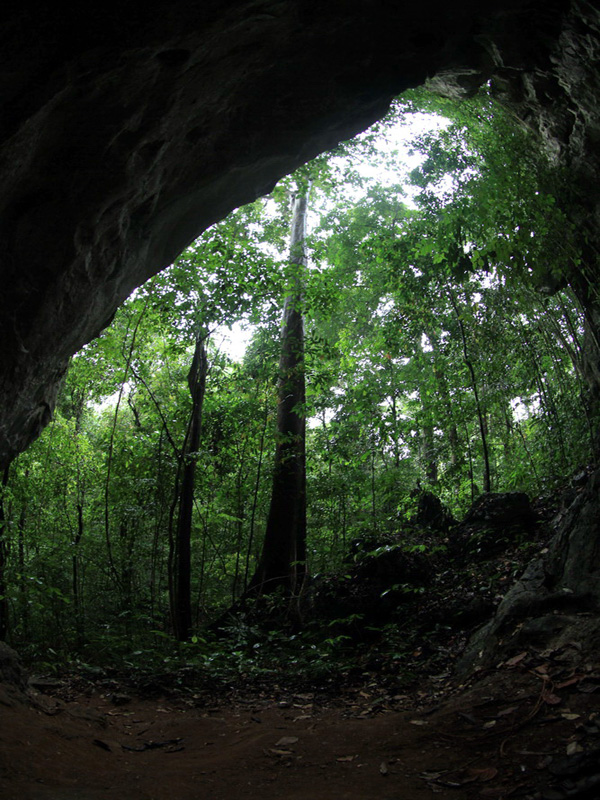State-sponsored environmental center urges governor to protect the area, which contains the oldest cave paintings in Southeast Asia
Steep towers and rock formations jut out of the Borneo rainforest, sitting atop a vast network of caves and underground waterways in Indonesia’s Mangkalihat-Sangkulirang region. This dramatic karst landscape, created by the slow erosion of limestone mountains in Indonesia’s East Kalimantan province, also contains prehistoric fossils and cave paintings created by some of Borneo’s earliest inhabitants and serves as an important source of water for the surrounding area.
However the limestone that helped make this landscape so unique may be putting it at risk, as cement producers eye the area for future investment. Limestone is a key raw material needed to manufacture cement, and at least 13 cement companies are already set to line up with plans to build new factories in the province, Mongabay-Indonesia reported on Friday. The limestone-rich karst areas in East Kutai, Berau, North Penajam Paser and Paser districts may be of particular interest to cement company investors.
“What is certain is that the karst areas in East Kalimantan will be a primary target for cement factories searching for raw materials,” Tuti Hendrawati Mintarsih, the head of the Balikpapan Ecoregion Management Center, a government-sponsored environmental center in East Kalimantan, told Mongabay-Indonesia earlier this month.

Tuti cautioned that development in karst regions could harm delicate ecosystems, adding that communities in other parts of Indonesia have blocked development in karst areas in order to protect valuable groundwater sources. “We must not develop in karst regions to the point that it damages ecosystems,” Tuti said. “We need regulations. If nothing else, regulations from the governor must be used to protect karst areas.”
Other experts gave even stronger warnings. “We must exercise caution in the management of karst areas, because the karst ecosystem is a water source,” said Pindi Setiawan, a researcher from the Bandung Institute of Technology (ITB) who studies karst landscapes. “If the region is destroyed, the climate in East Kalimantan will change. There will be long droughts, influencing life [in the area].”
The region is also a unique archeological site, with at least 37 caves containing prehistoric artifacts and paintings, the oldest in Southeast Asia. “Many caves containing prehistoric paintings can be found from the East Kutai region to Berau,” Pindi said.
Original article: Karst Kaltim Terancam Pembangunan Pabrik Semen